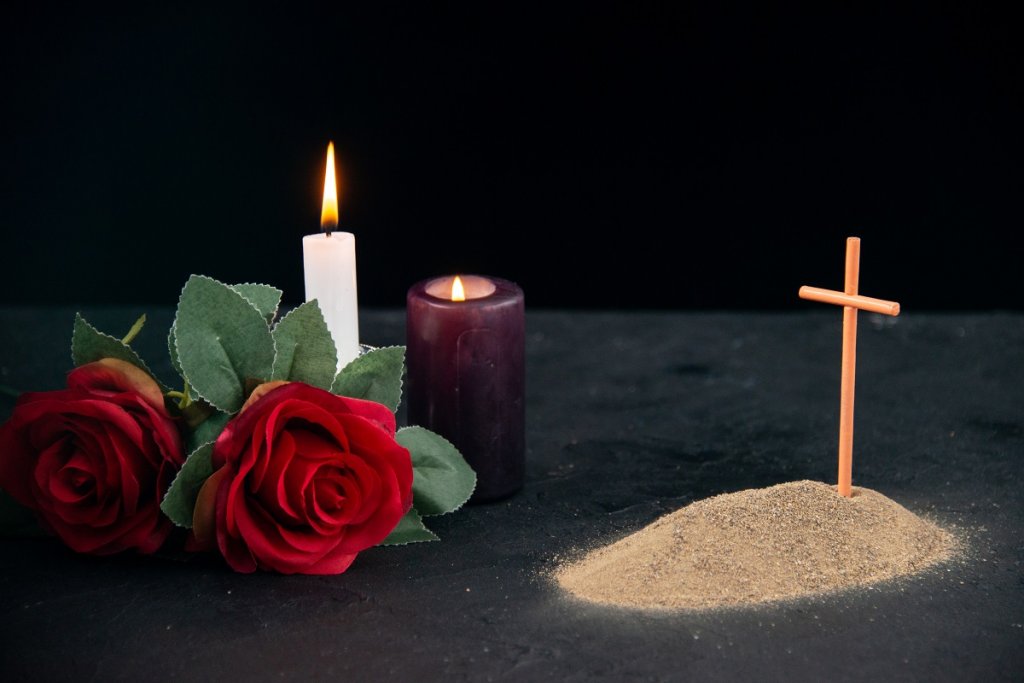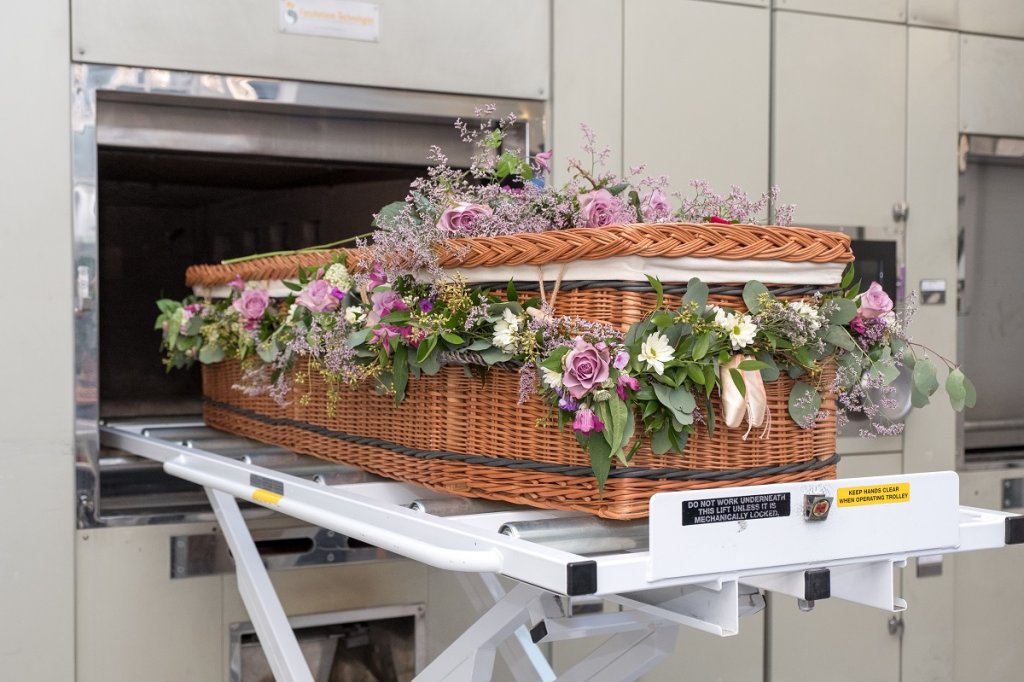Cremation is the method of reducing the body to bone fragments though the use of high heat. The remains are further processed for burial, entombment, display, or scattering. The process has grown to become one of the most popular funeral trends. Costs will vary based on region and additional funeral options.
Until recently, the sequence of events after death has meant entrusting the body to a funeral home for embalming, a public viewing, a church service, and a traditional burial in a cemetery. As traditions of all kinds have undergone questioning, revision, and even elimination, what happens to the mortal remains of human beings after death is changing too.
For more than 50% of Americans, cremation is now preferred. The cremation rates vary by state, with Southern states such as Mississippi, Alabama, and Kentucky reporting less than 25% and Western states like Nevada, Washington, Oregon, and Hawaii, plus Maine on the East Coast, reporting rates of over 70%.
Throughout the world, cremation is a hot topic too. Rates exceed 65% in Canada, well over 96% in Far Eastern countries such as Japan, South Korea, Singapore, and Nepal, and 77% in the United Kingdom.
Why are views on death traditions changing? What does cremation involve? Does it mean abandoning all practices associated with death and burial?

Table of Contents
What Is Cremation?
Cremation is a method of burning a deceased body at high heat to reduce the remains to ash. While laws vary state by state, for the most part, remains can be buried in a cemetery lot or a cremation garden, interred in a columbarium, kept at home, or scattered.
The body is placed in a cardboard or wooden box for the process. Depending on the weight of the individual, the cremation of an average-sized adult can take two to three hours at operating temperatures between 1,000 and 2,000 degrees Fahrenheit. It takes another two hours for the remains to cool down.
Cremated remains are whitish to light grey in color and look like coarse sand. The remains of an average-sized adult weigh between 7 and 8 pounds. Except for minute and microscopic particles that are impossible to remove from the cremation chamber and processing machine, all of the cremated remains are given back to the family within a few days.
The crematory puts the ashes in a temporary urn – a plastic bag with a cardboard or plastic box. The facility may have upgrades available for displaying the remains, but many families scatter the remains right from the box. There are no laws requiring the purchase of an urn.
In the video below, Funeral Fundamentals’ expert Jeff Lemley discusses all the cremation options before, during, and after the process itself, including private viewing, cremation containers, and ashes of the loved one.
Why Is Cremation An Increasingly Popular Option?
Funerals are expensive. Figures from the National Funeral Directors Association (NFDA) indicate that an average funeral costs about $8,000 before factoring in the cost of in-ground interment or above-ground entombment. The actual price tag for funeral services can be multiples of the average costs cited.
Cremation can be a lower-cost option, especially if the deceased chooses a direct or simple cremation without the usual funeral home or cemetery services. Even a cremation that includes the traditional benefits of a funeral home is at least $1,000 less. Direct cremation arranged at a cremation center can cost as little as $600-$1,000, plus the cost of any church or graveside services and disposition of the ashes. (The median price without services is $2,300.)
Aside from cost considerations, cremation is an increasingly popular option for several other reasons:
- Many families are spread across the country, so there is little pressure to be buried near the family.
- Burial unnecessarily takes up land and is not eco-friendly due to the chemicals used.
- If death occurs away from home, shipping home cremated remains is less expensive than shipping a body.
- Cremation services are easier to arrange than traditional interment.
- The cremation process is more accepted in our culture, especially as the population has become more educated. (Higher cremation rates correlate with higher education.)
- New, innovative, and creative trends in memorialization are more of the focus today than the traditional graveside service and burial.
- Even in the US, people are aware that many other cultures embrace cremation, which has influenced our cultural traditions.
- Most major Western religions accept cremation, even if they prefer the traditional burial of the body. Catholics, Protestants, and most sects of Judaism now allow the ashes to be brought into the church for memorial services. Catholics still insist that the remains be kept intact and intrude in a final resting place. Eastern religions such as Hinduism, Jainism, Sikhism, and Buddhism mandate cremation. Orthodox Jews, Muslims, and some other groups still forbid it.

Types of Cremation Services
Death is often surrounded by rituals and ceremonies that benefit the living while honoring the dead. Cremation is not an alternative to a funeral or memorial service if the departed and their family want one. Individuals can preplan their final arrangement to include cremation along with their other preferences for their services and burial.
There are four main variations on the events surrounding a cremation.
As the name suggests, cremation with a traditional service is cremation with funeral costs, including embalming (if required) and display in a rented casket. The funeral service is conducted as usual, after which the body is cremated. This type of cremation costs more than all other types.
1. Cremation With A Traditional Service
After a public viewing of an embalmed body, followed by a funeral service at a church or other religious institution, funeral home, or other location, the cremation then takes place. The family either commits the ashes for in-ground burial, receives them for display on the mantle or in a columbarium where other ashes are stored, or distributes them where the departed requested.
When the process requires many services from a funeral home, the costs are the highest of all cremation options.
2. Cremation With A Memorial Service
A service that takes place without the body or ashes is considered a memorial service. Family and friends still gather to pay their respects to the departed, who may attend a religious ceremony or a celebration of life to honor their memory after the cremation.
Some families desire a brief memorial service in the viewing room or chapel that may include readings, prayers, singing, sharing of memories, and a brief eulogy – or at least a few words to honor the deceased. When this is complete, the crematory operators will close the retort.
When the body is cremated without a viewing that requires embalming and casketing, this type of cremation is the best of both worlds. It combines the economy of a direct cremation with the ceremonies that grieving families
3. Direct Cremation Without A Ceremony
A direct cremation involves no ceremonial services. The body is cremated right after the person’s death without embalming or visitation. If the immediate family wants a last look, they may see their loved one lying there in the same clothes they died in. For a more formal family viewing, they may bring in clotheses.
Embalming is not legislated before cremation without visitation. By law, the funeral home cannot tell you that embalming must be done.
Direct cremation is the most affordable cremation option. The family receives the ashes in a temporary urn. If the deceased want their ashes released into the wind without burial or formal display, this option remains economical.
4. Cremation With The Body Donated To Science
Many people want to donate organs after death, but some prefer to donate their entire bodies for scientific research. In return, the organization that receives the body handles the cremation and pays for it once their research is done.
Arrangements for this type of disposition must be made before death with participating hospitals and research centers. Most organizations have strict requirements for acceptance and only want bodies of average weight, without contagious diseases, deformities, trauma or open wounds, or other problems.
At the time of death, the hospital or research center may reject the donation if the person becomes debilitated after signing up for the program. When preplanning to donate one’s body to science, a person should note backup arrangements.
Costs of Cremation
Cremation is cheaper than traditional ways of preparing the body, but prices vary, depending on whether the funeral home handles them or a crematory does so directly. Many funeral homes outsource cremation, but they embalm the body for viewing, arrange for cremation services, and handle most details. These services may range from $2,000 to $3,000.
Some crematories advertise that their service starts at around $600, but the typical price range is from $1,000 to $3,000. The more traditional funeral services the family requires, the higher the price.
Prices also vary by state and region.
Urns for the ashes start at $10 but can soar into the thousands.
If the family wants to bury the remains, the cemetery charges for opening and closing the gravesite and putting it in a vault approximate those to bury a body. Above-ground entombment in a columbarium or mausoleum can also add thousands to the cost.

Common Questions About Cremation
Cremation expedites the process of reducing a body to bone fragments through the application of intense heat. Contrary to what some people believe, cremation does not limit choices but in fact, increases one’s options.
It is performed respectfully and dignifiedly and can be memorialized in many ways.
How soon after death can a body be cremated?
Because paperwork surrounding death takes time to obtain, bodies are not usually cremated for at least 24-72 hours once the death certificate and cremation permits are received.
How long can the body be kept before cremation?
The body should be refrigerated at once to slow down decomposition. While it can be refrigerated for weeks before a cremation or funeral, the mortuary charge by the day, which adds to cremation costs.
Is the family present for the cremation?
Most crematories cannot accommodate families participating in the process. However, some have viewing rooms where the family can witness the box containing the body being put in the chamber where the process will occur, but not the process itself.
What does a crematory private viewing look like? Funeral Fundamentals’ expert Jeff Lemley answers this question in the video below.
Does the body burn completely during cremation?
The high heat used for cremation destroys most of the hard and soft tissues in the body, but parts of the skeleton, hands, feet, and teeth are recognizable after cremation. The skeletal remains are then raked from the cremator and placed in a cremulator machine, which grinds the bones into ash, so no recognizable parts are left.
What happens to implants, fillings, and prosthetics during cremation?
Silicone breast implants burn during cremation, but fillings and metal joint replacements do not; the metal is separated from the ashes after the process. Pacemakers and defibrillators can explode, so these parts are removed before cremation services.
How can I be sure I receive the correct remains?
Only one body can be cremated at a time to reduce the risk of mixing up remains. Reputable cremation providers have rigorous operating policies and procedures to minimize the potential for human error.
May I tour a crematorium prior to contracting?
Reputable firms will always allow and encourage a tour. If not, you might want to try elsewhere.

